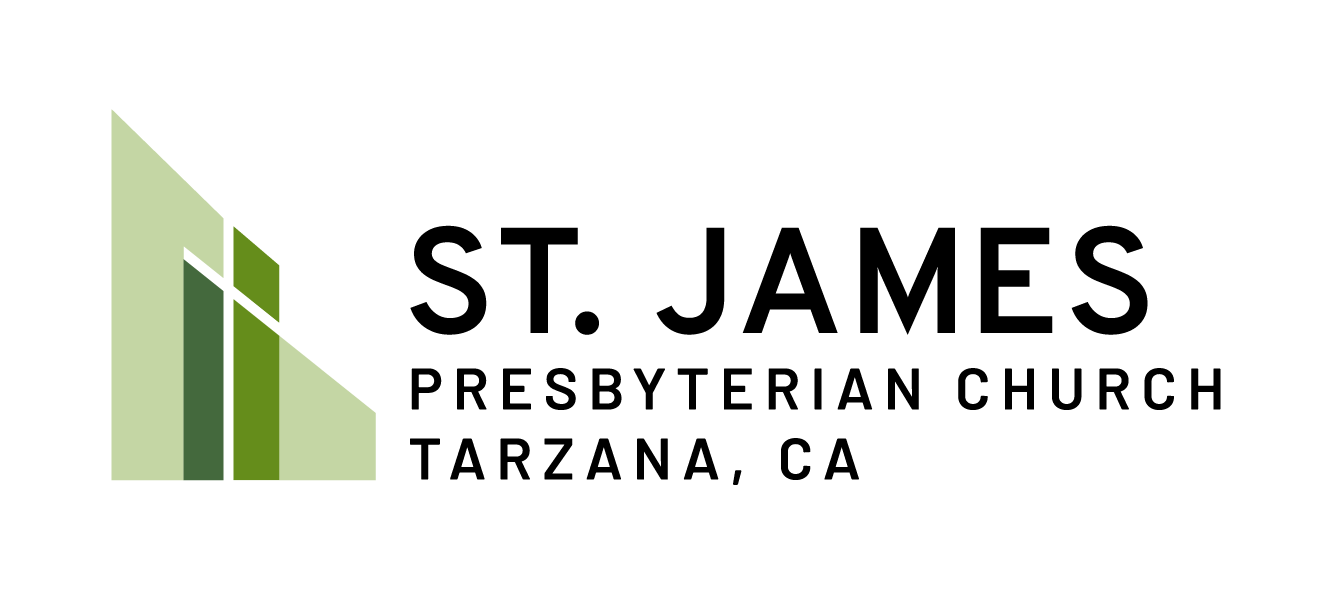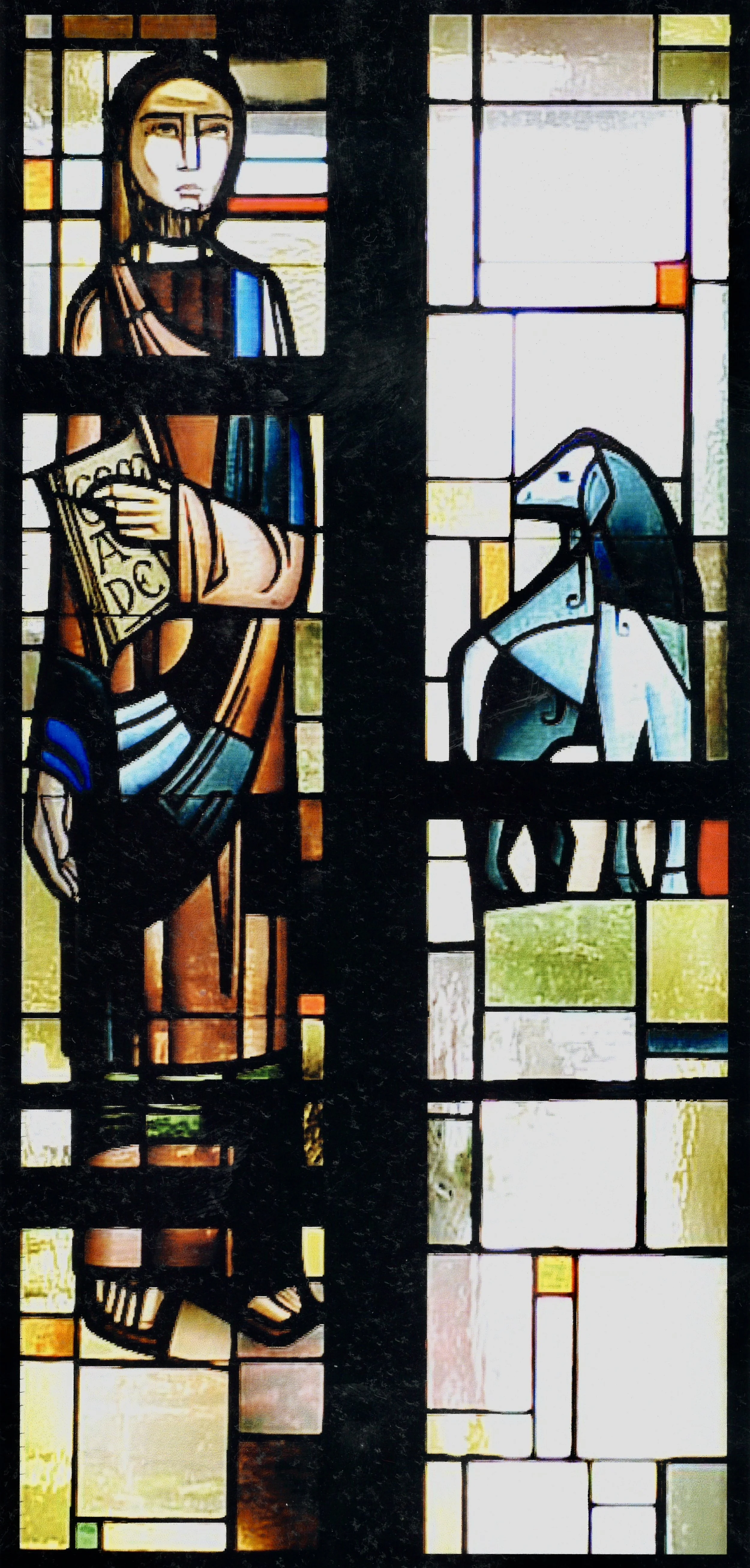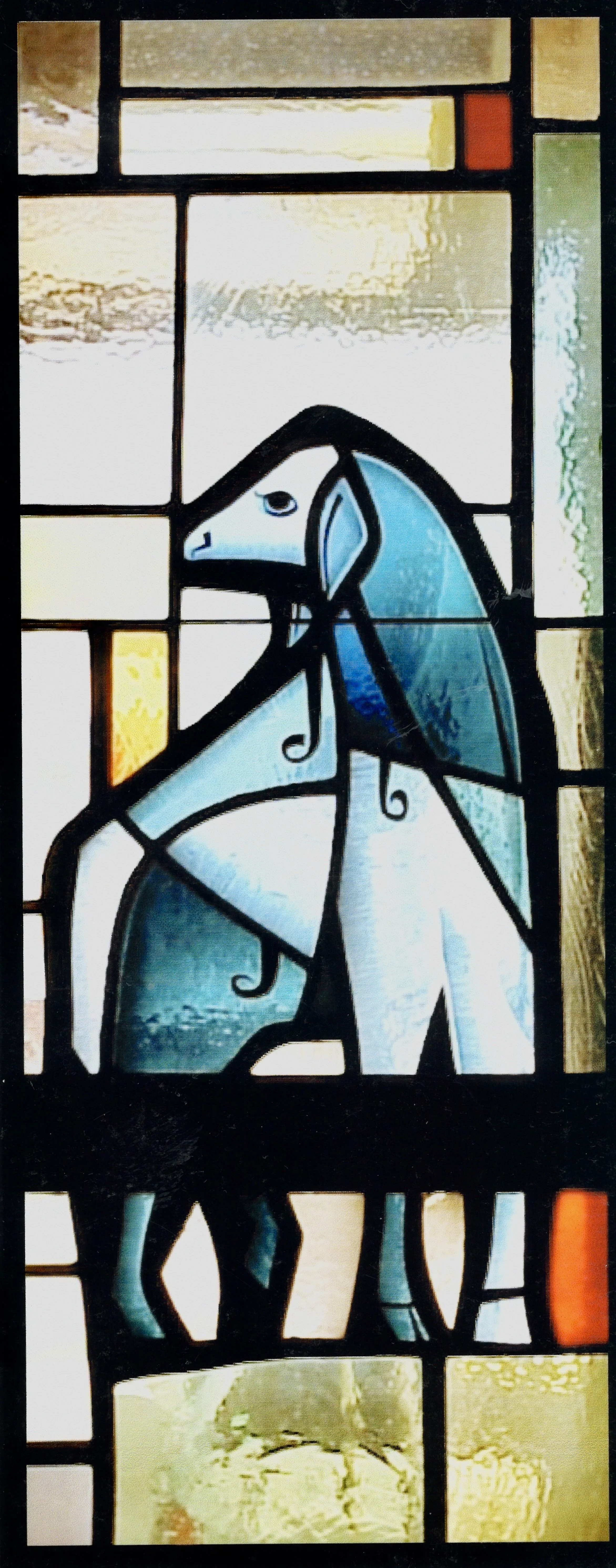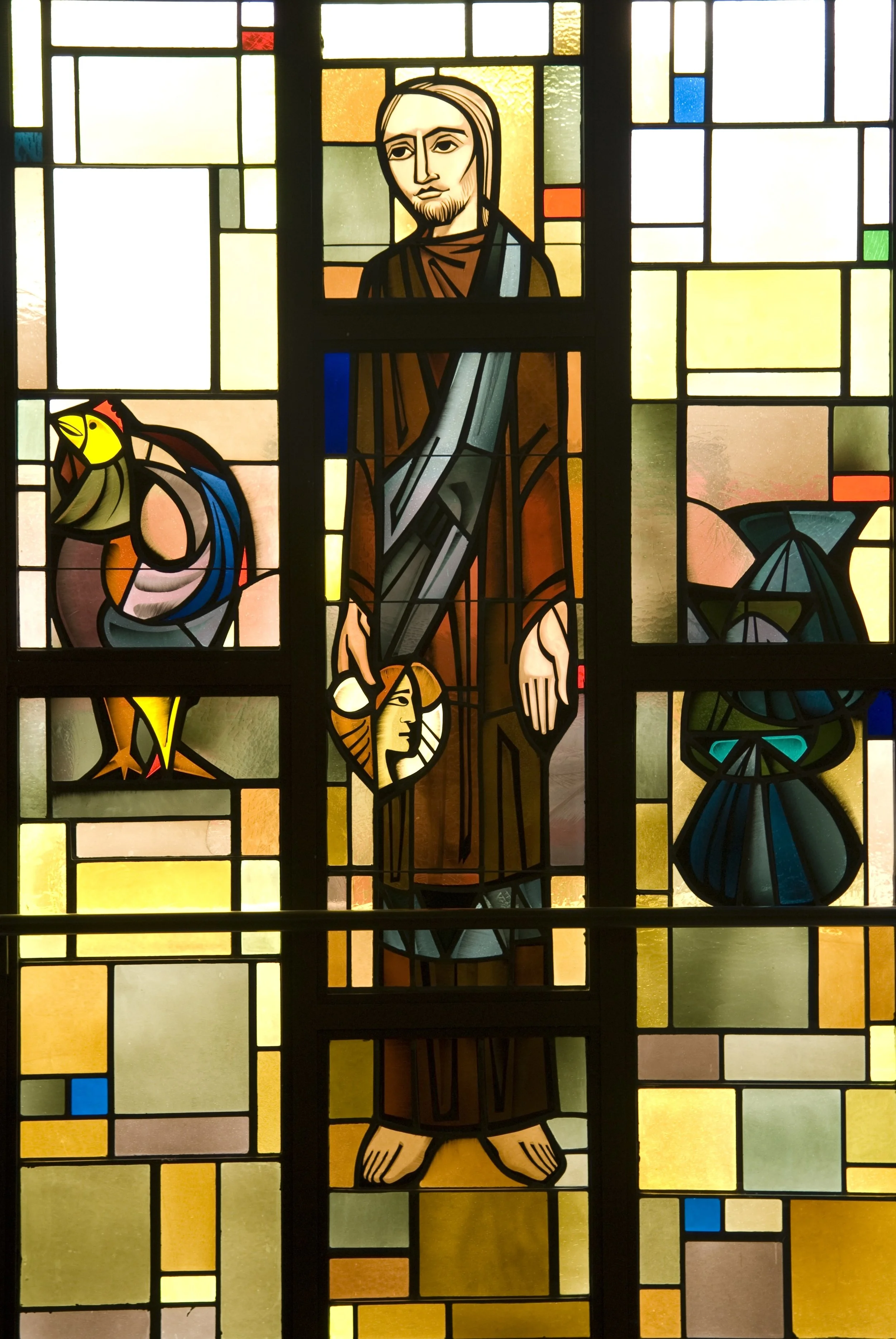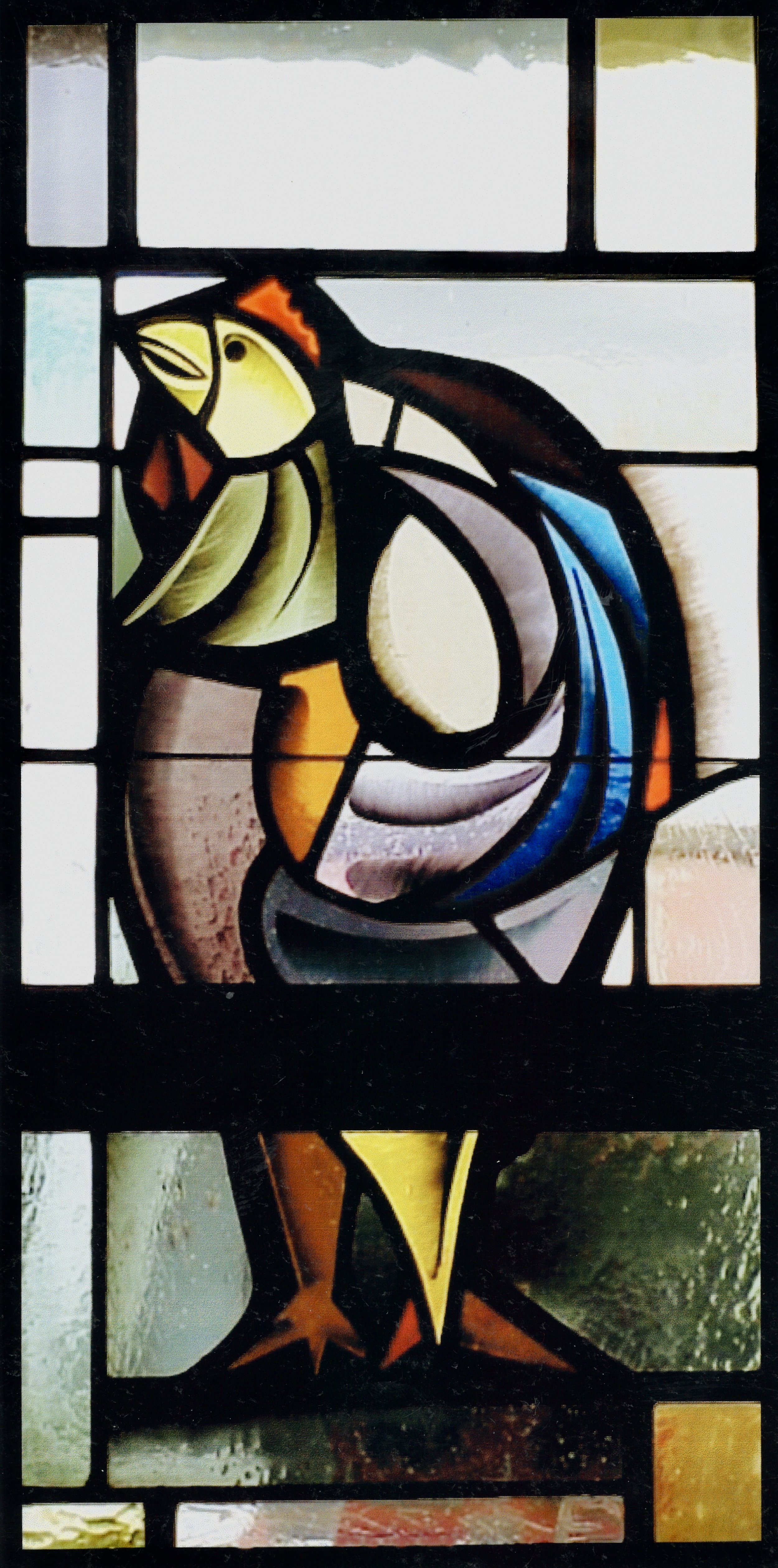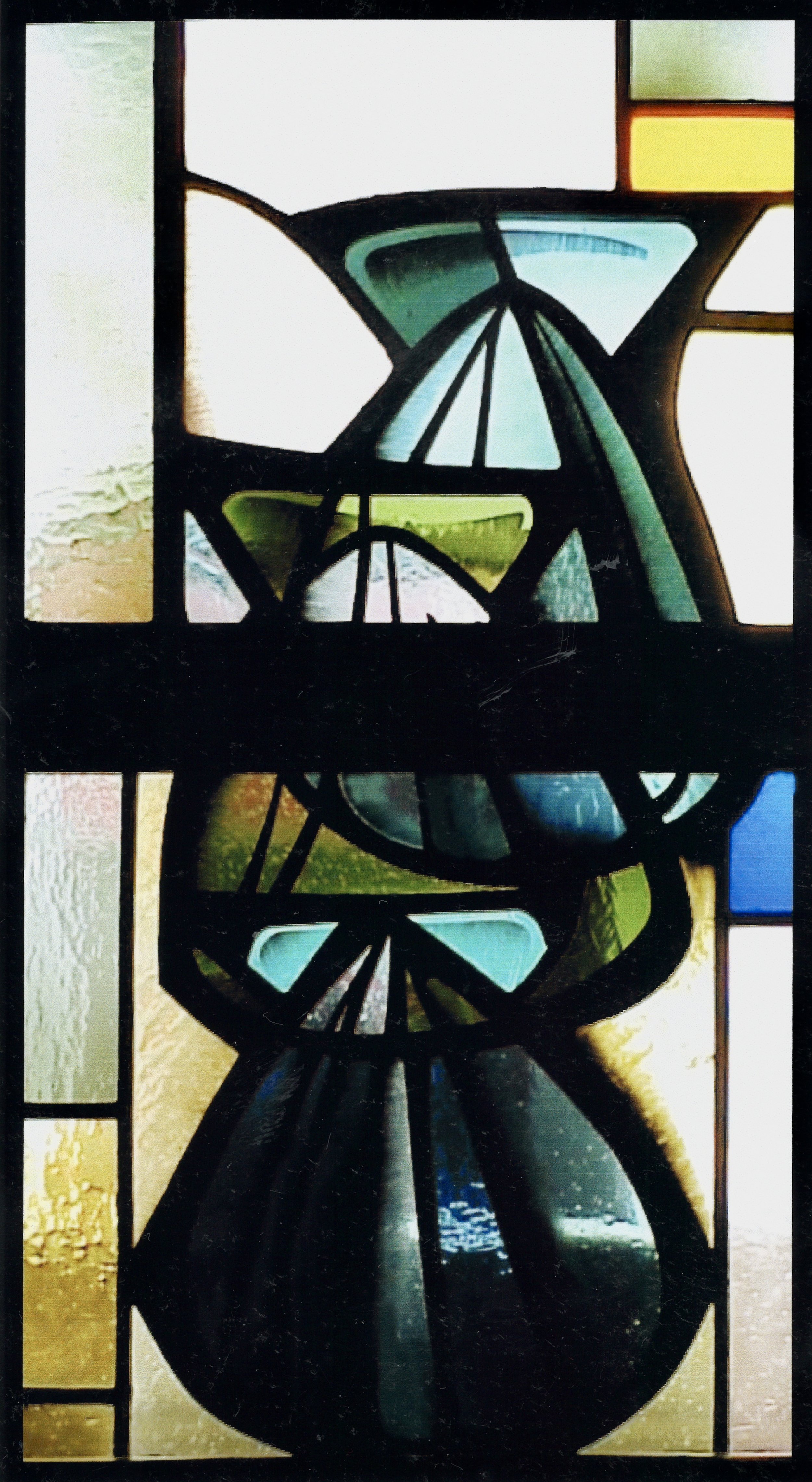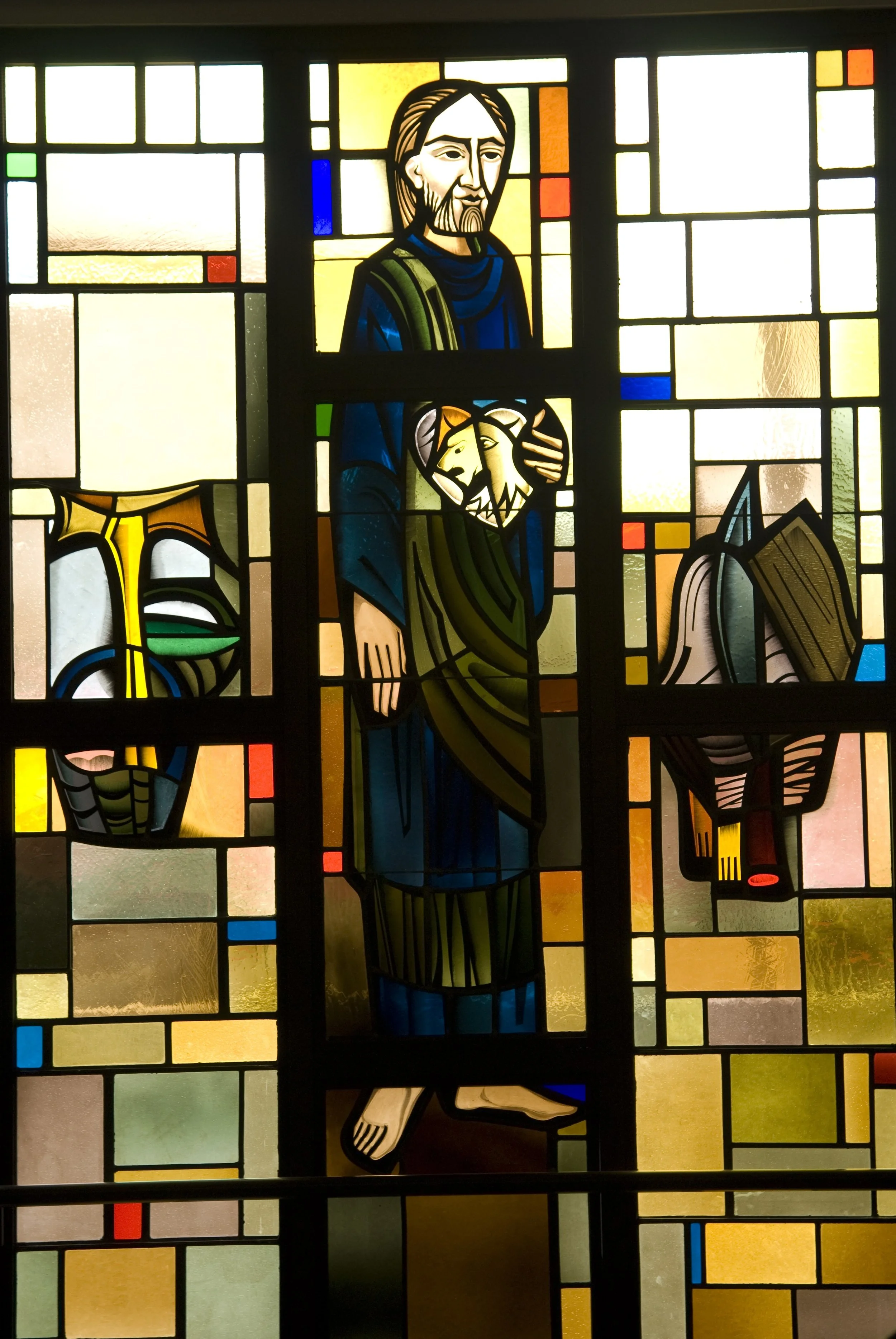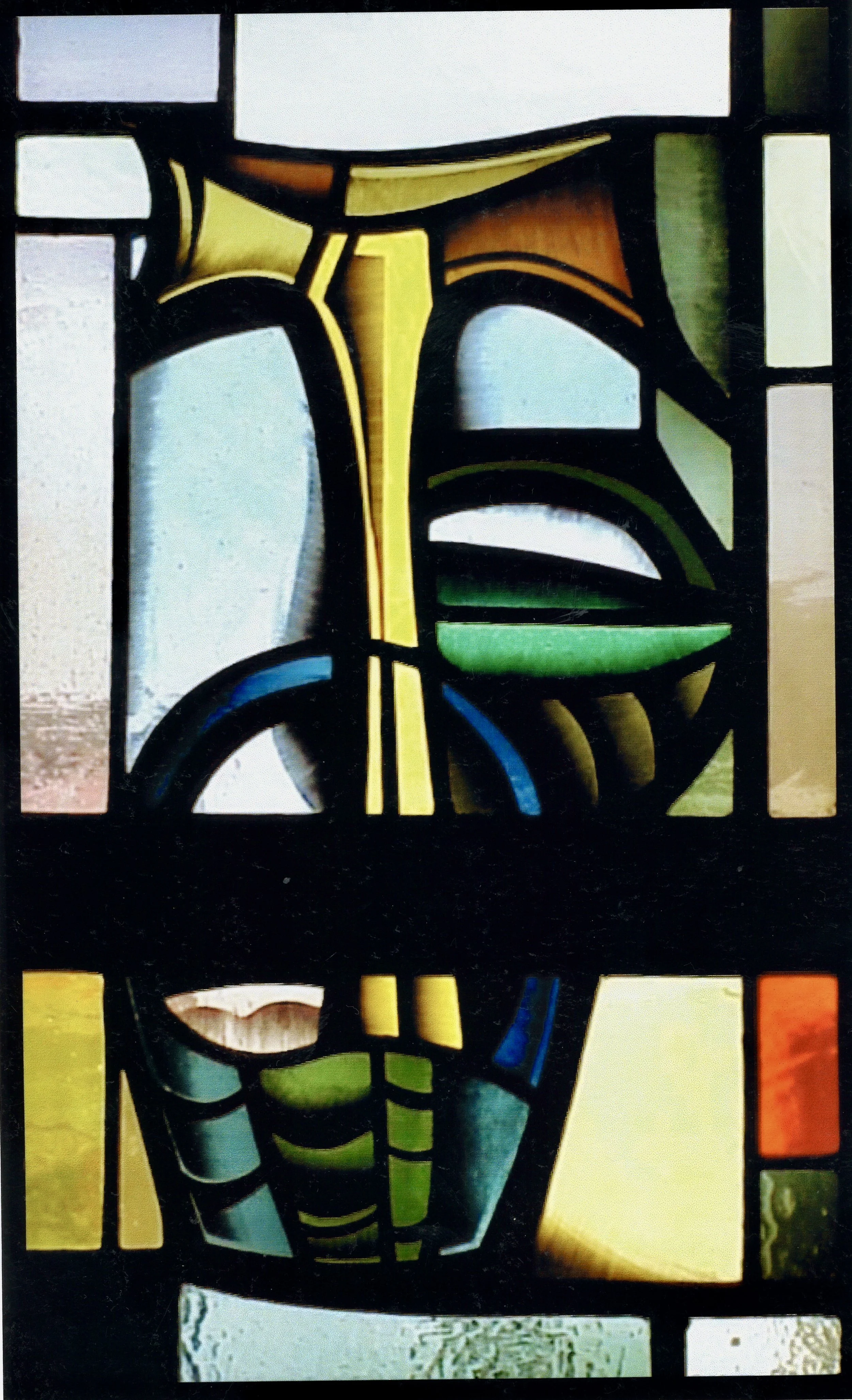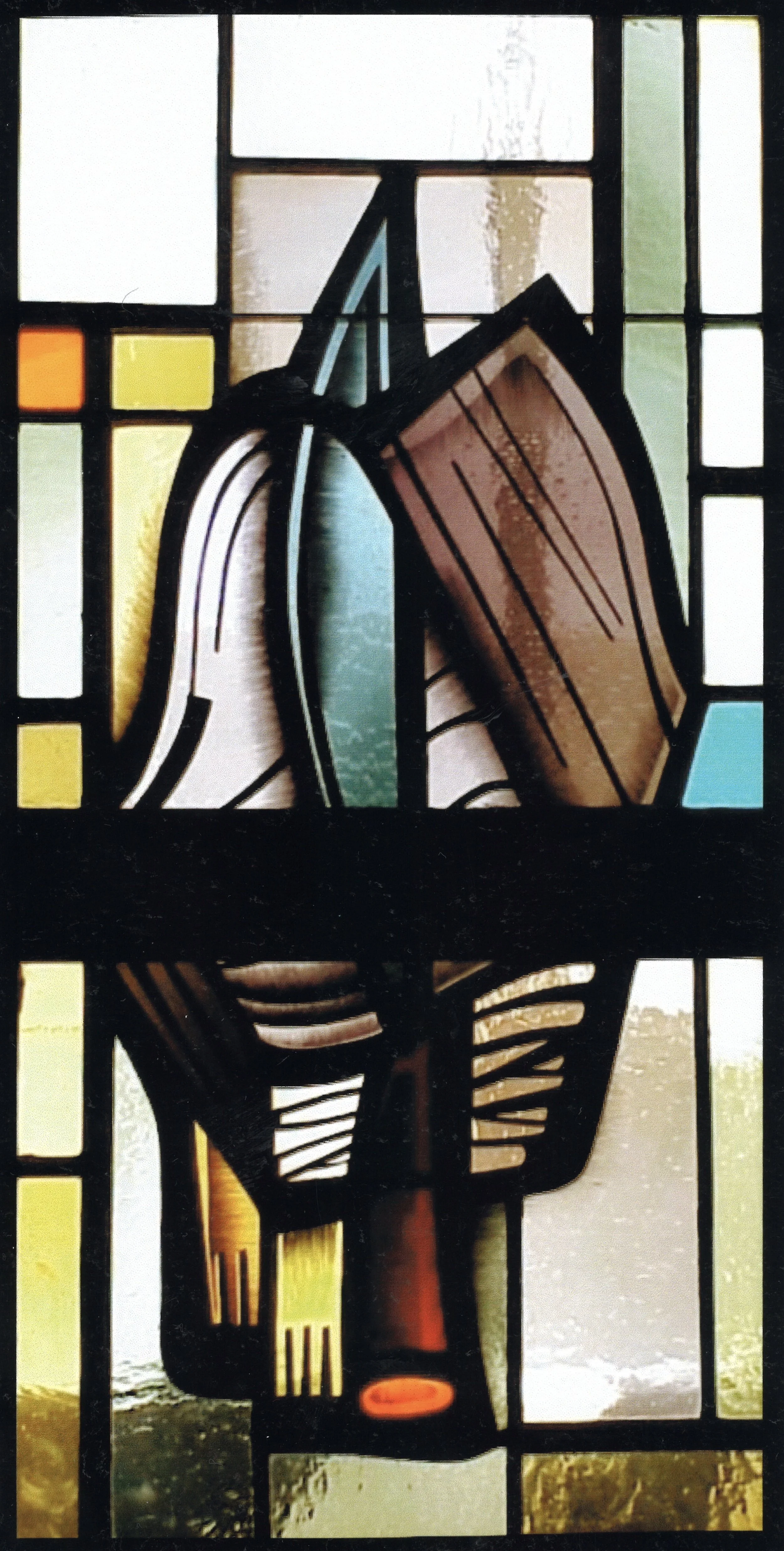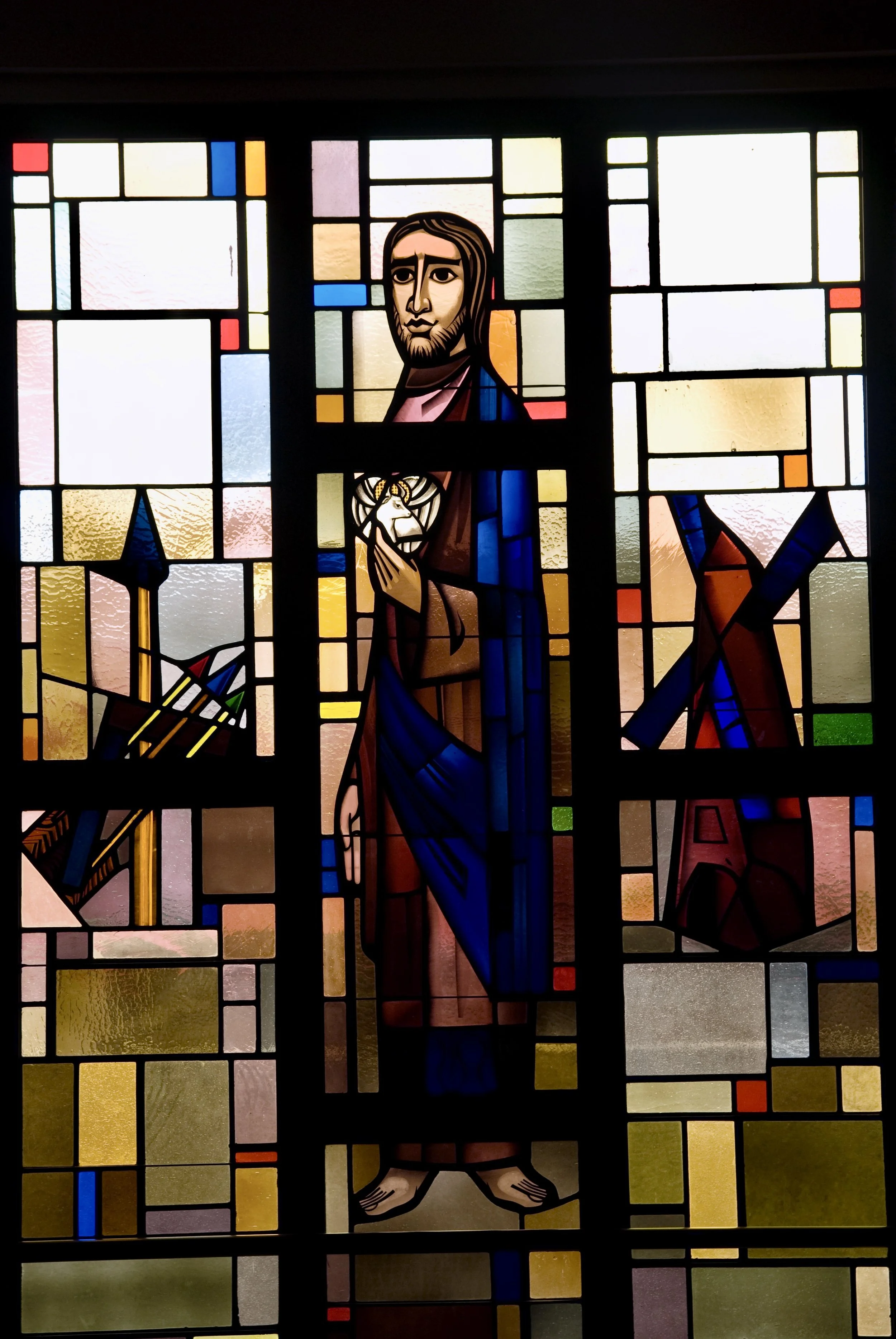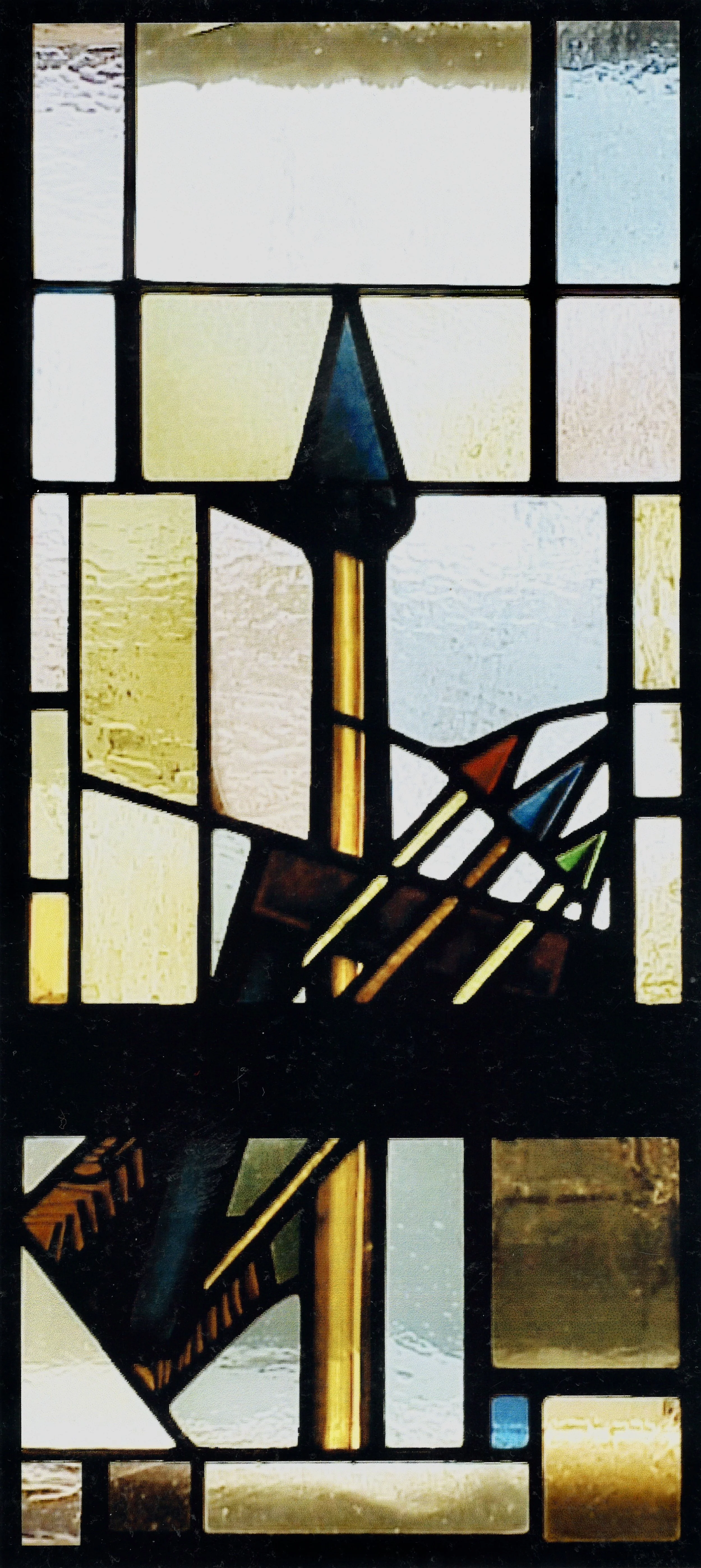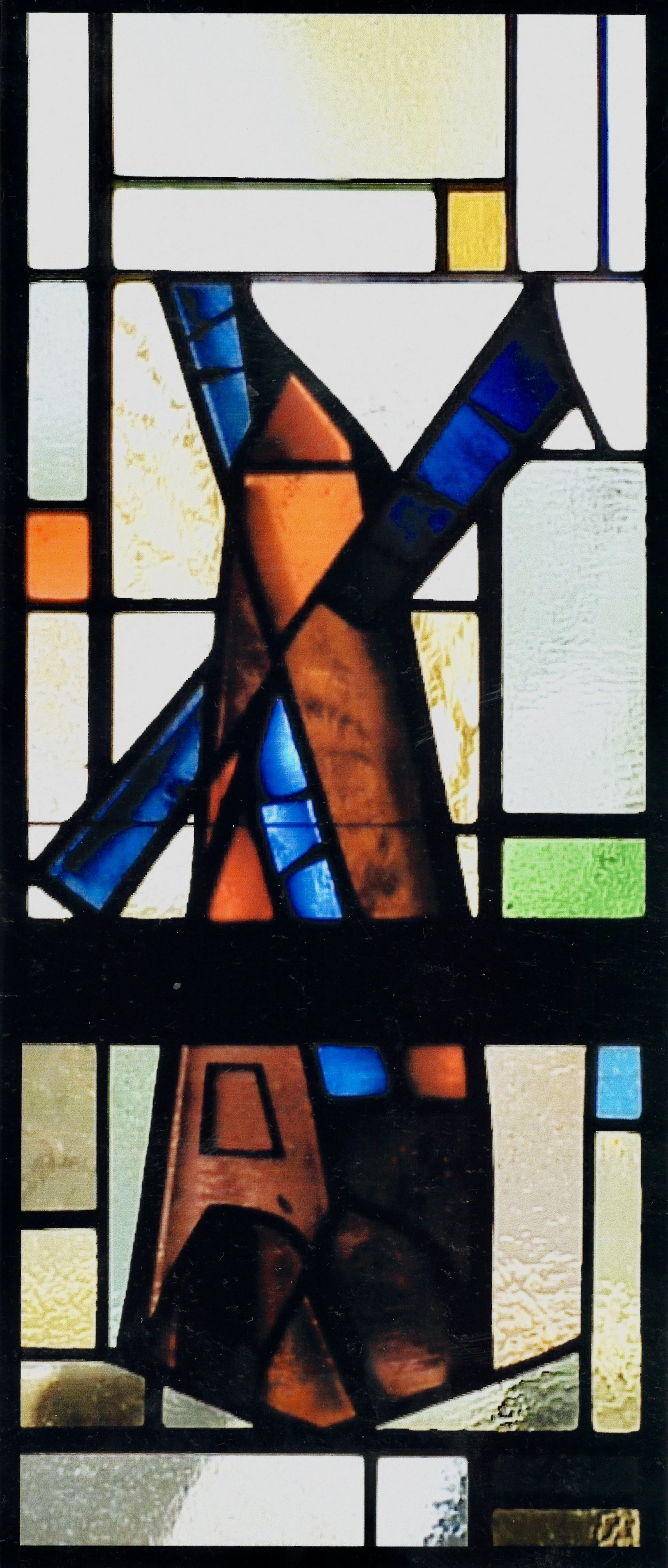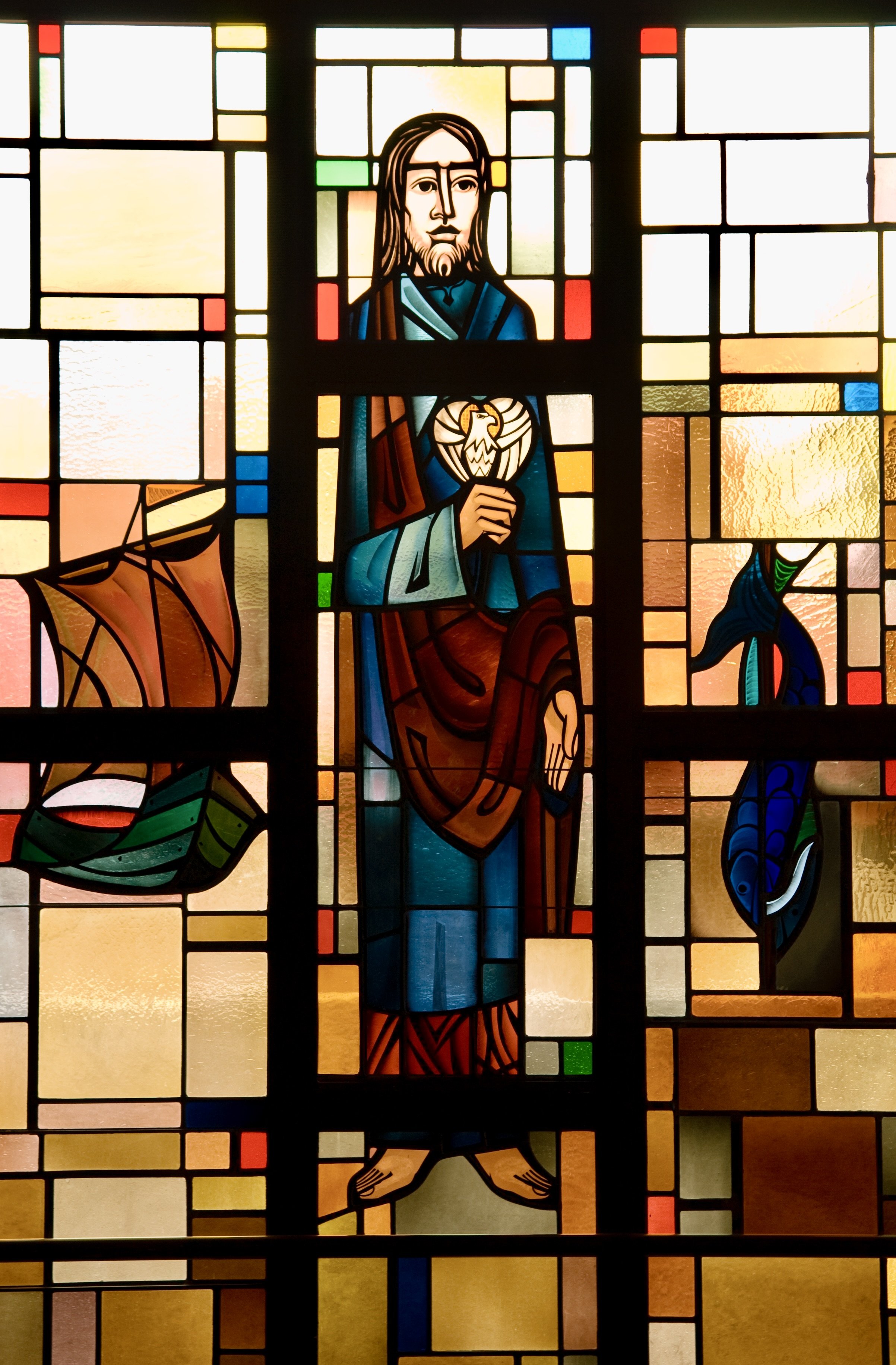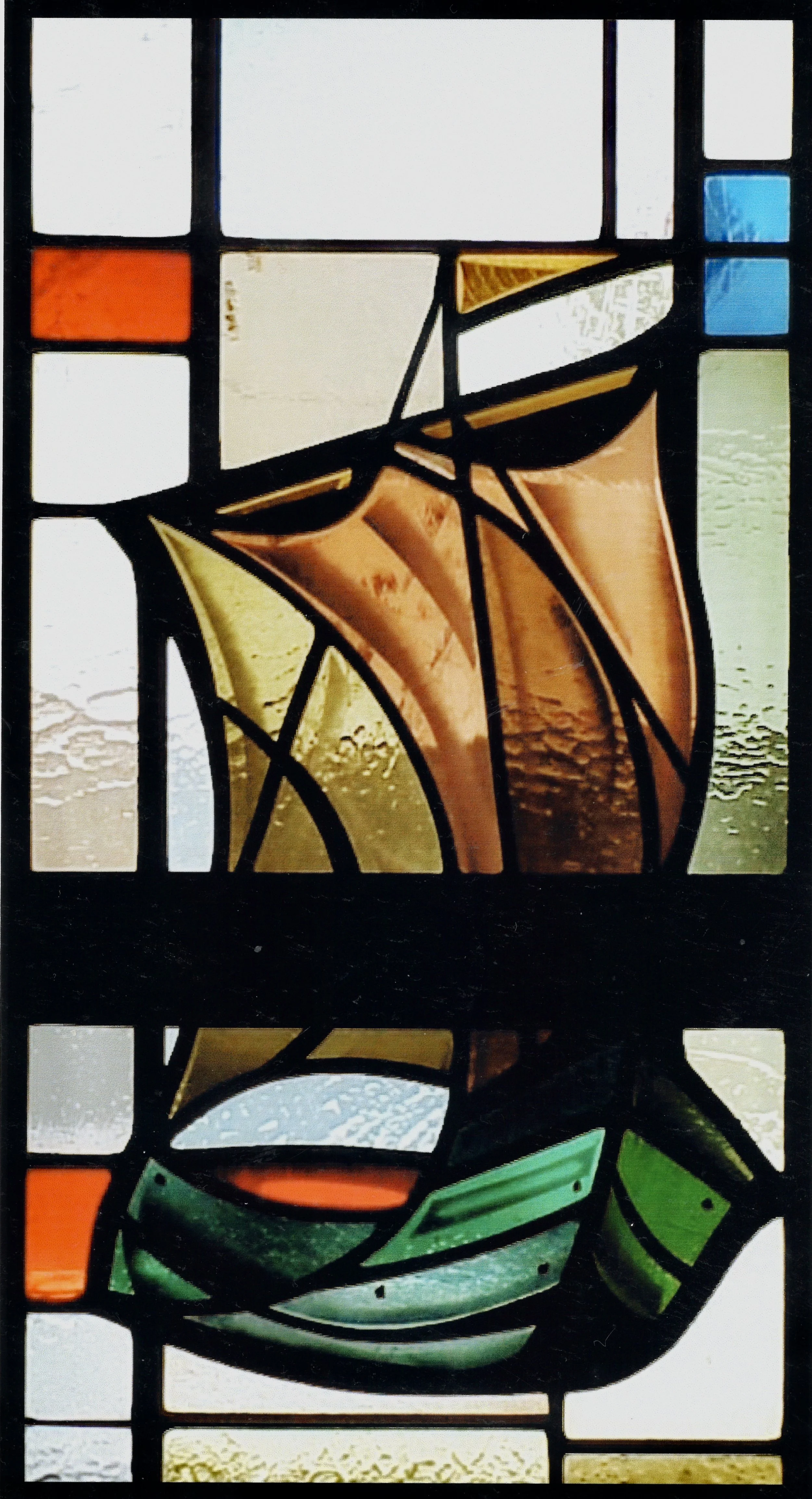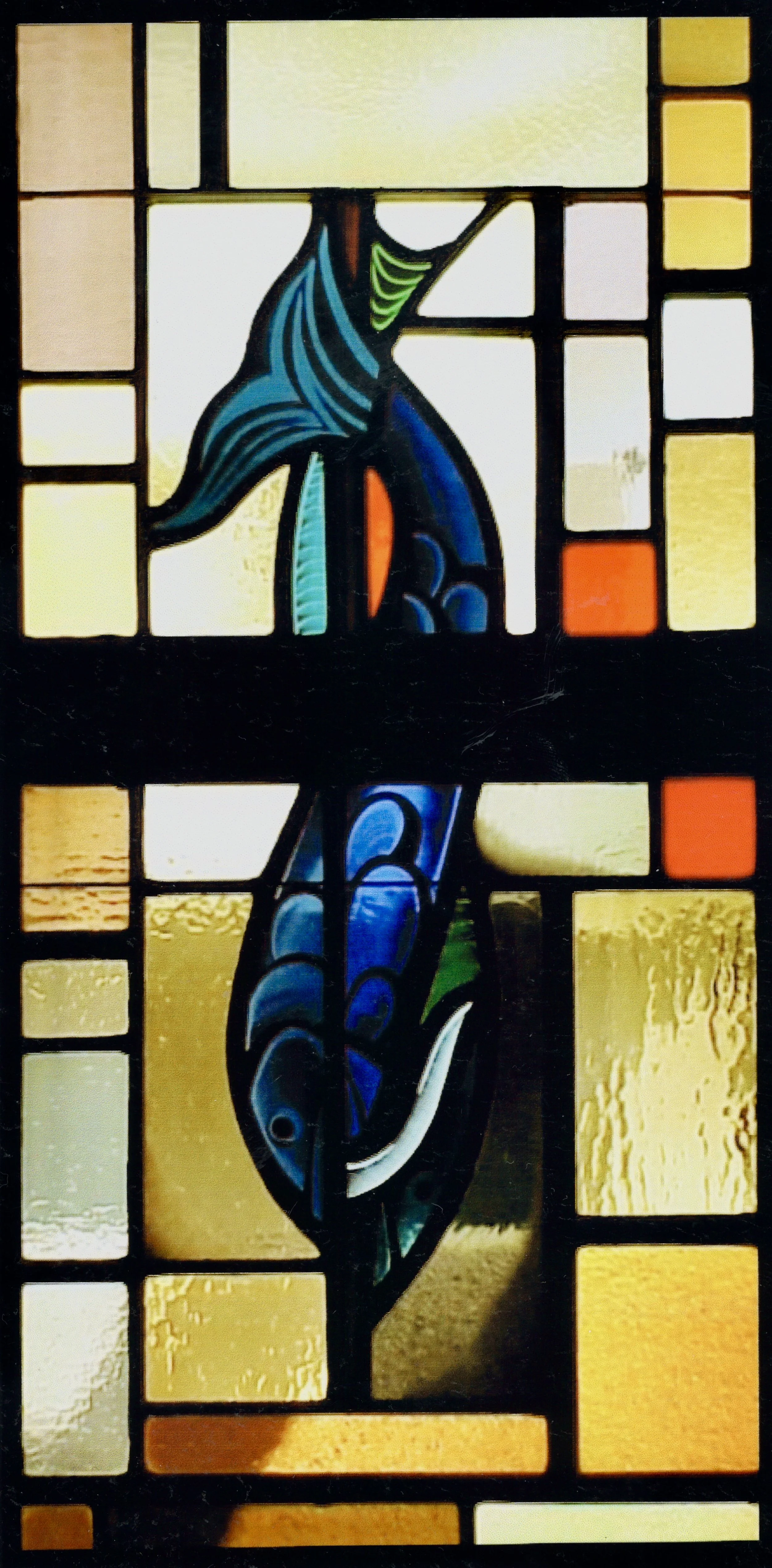East Windows
View of the East Windows, from North to South. The East Windows contain imagery related to John the Baptist the disciples of Christ.
East Windows, North to South.
John the Baptist holds a scroll with the words "Ecce Agnus Dei" which means "Behold the Lamb of God." John the Baptist prophesied the coming of the Savior when Jesus came to be baptized by him in Judea. John recognized Jesus and saw the Spirit of God descending like a dove and heard a voice "This is my beloved Son, in whom I am well pleased." (Matthew 3:13).
Detail, John the Baptist, East Windows.
The Lamb, a symbol of Christ, represents the coming sacrifice of Jesus Christ for human redemption. John the Baptist points to the Lamb, often held in his left hand, in many portrayals.
There are numerous scriptural references to Christ giving authority to this symbolism depicted in this panel, such as John 1:29, "The next day John saw Jesus coming to him, and said, Behold the Lamb of God who takes away the sins of the world."
St. Matthew, Apostle, East Windows.
Matthew is shown holding a winged man in reference to his account of the Incarnation of Christ. This cherub with a human face symbolizes a record of the human ancestry of Christ. Matthew was a tax collector before becoming a disciple of Christ. Matthew wrote his Gospel in Judea before he was martyred in Ethiopia with an axe.
Detail, St. Matthew, East Windows.
The Cock often represents St. Peter, symbolizing Peter's denial of Christ and repentance. The cock also symbolizes Christ's Passion (John 13:38) and is connected to watchfulness and vigilance because it crows early in the morning.
Detail, St. Matthew, East Windows.
Scallop Shells, also known as cockleshells, signify pilgrimage and are associated with St. James the Great. St. James made countless pilgrimages to the celebrated shrine at Santiago del Compostela, in Spain.
St. Mark, Apostle, East Windows.
Mark holds his attribute, the winged lion. Wings symbolize divine mission and are associated with the emblems of all four evangelists.
The lion depicts strength and courage, as well as signifying Jesus, the Lion of Judah. A legend stated that lions are born dead until revived three days after birth, thus the association with the Resurrection.
Mark is said to have removed a painful thorn from a lion's paw earning him a faithful friend.
Mark's Gospel is considered the earliest in existence. St. Mark's city, Venice, Italy is protected by the symbol of a lion. Mark was martyred in Alexandria, Egypt.
Detail, St. Mark, East Windows.
Tau Cross and Basket depicts the Apostle St. Philip. The cross is also known as the Egyptian or Tau cross which has three arms, not four, in the shape of the letter T. Tradition states that Moses lifted the serpent in the wilderness on such a cross, thus the cross is known as the Old Testament cross. This story foreshadows Christ upon the cross as discussed in John 3:14. The Tau cross is associated with St. Philip as he was crucified upon a cross of this type.
Detail, St. Mark, East Windows.
Open Bible with Flaying Knife depicts the Holy Scriptures with the emblem of St. Bartholomew. Bartholomew, a disciple of Christ who traveled as far east as India, was flayed alive and then crucified.
St. Luke, Apostle, East Windows.
St. Luke holds a winged ox, the symbol of patience and strength.
The ox and ass appear together in Nativity scenes and is a sacrificial animal of the Jews. Thus the symbol of Christ as the ox, the true sacrifice, bearing a yoke for the good of others. Luke wrote much about the sacrificial aspects of Christ Jesus. Luke wrote the book of Acts and tradition says that he was a painter who made many converts to the faith by showing his work. Luke was crucified in Greece.
Detail, St. Luke, East Windows.
Square Arrows and Spear represent the Apostle St. Thomas. Arrows suggest the service of God through a spiritual weapon. The Spear is a symbol of the Passion because it was used to pierce Christ's side on the Cross. Thomas, known as "doubting Thomas" , did not believe in the Resurrection until thrusting his hands into his side. Thomas brought the faith to India.
Detail, St. Luke, East Windows.
Windmill representing the Apostle St. James the Less, one of the twelve apostles.
St.John, Apostle, East Windows.
St. John holds his attribute the eagle, a symbol of strength and of the Resurrection. An early belief stated that the eagle grew new plumage and regains its youth by flying near the sun and then plunging into the waters. The eagle represents new life at the baptismal font. Also a symbol of generosity, the eagle leaves half its prey for birds who follow. The eagle also symbolizes the gospels and lecterns used to read the Gospels were traditionally in the form of a winged eagle.
St. John founded the Seven Churches mentioned in Revelation, which he wrote on the island of Patmos. He died a natural death at Ephesus, Turkey.
Detail, St. John, East Windows.
Ship, representing St. Jude. Jude is the author of the last Epistle in the New Testament and he was martyred in Persia by a lance or halberd. The Ship is symbolic of the Church of Christ which floats safely as the ark of Noah did. St. Ambrose compares the Church to a ship and the Cross to a ship's mast. The ship also recalls the Christ's miracle on the Sea of Galilee when he calmed the waters and saved the apostles from capsizing.
Detail, St. John, East Windows.
Fish on a Boat Hook represents the Apostle St. Simon. In Greek, the first letters of the words "Jesus Christ God's Son Savior" form the word "fish."Thus, the fish is a symbol of Jesus Christ. The fish also symbolizes baptism for as the fish cannot live except in water, nor can the Christian without the waters of baptism. Simon was one of the shepherds to whom the angels revealed the birth of Christ. He was martyred in Persia with St. Jude.
